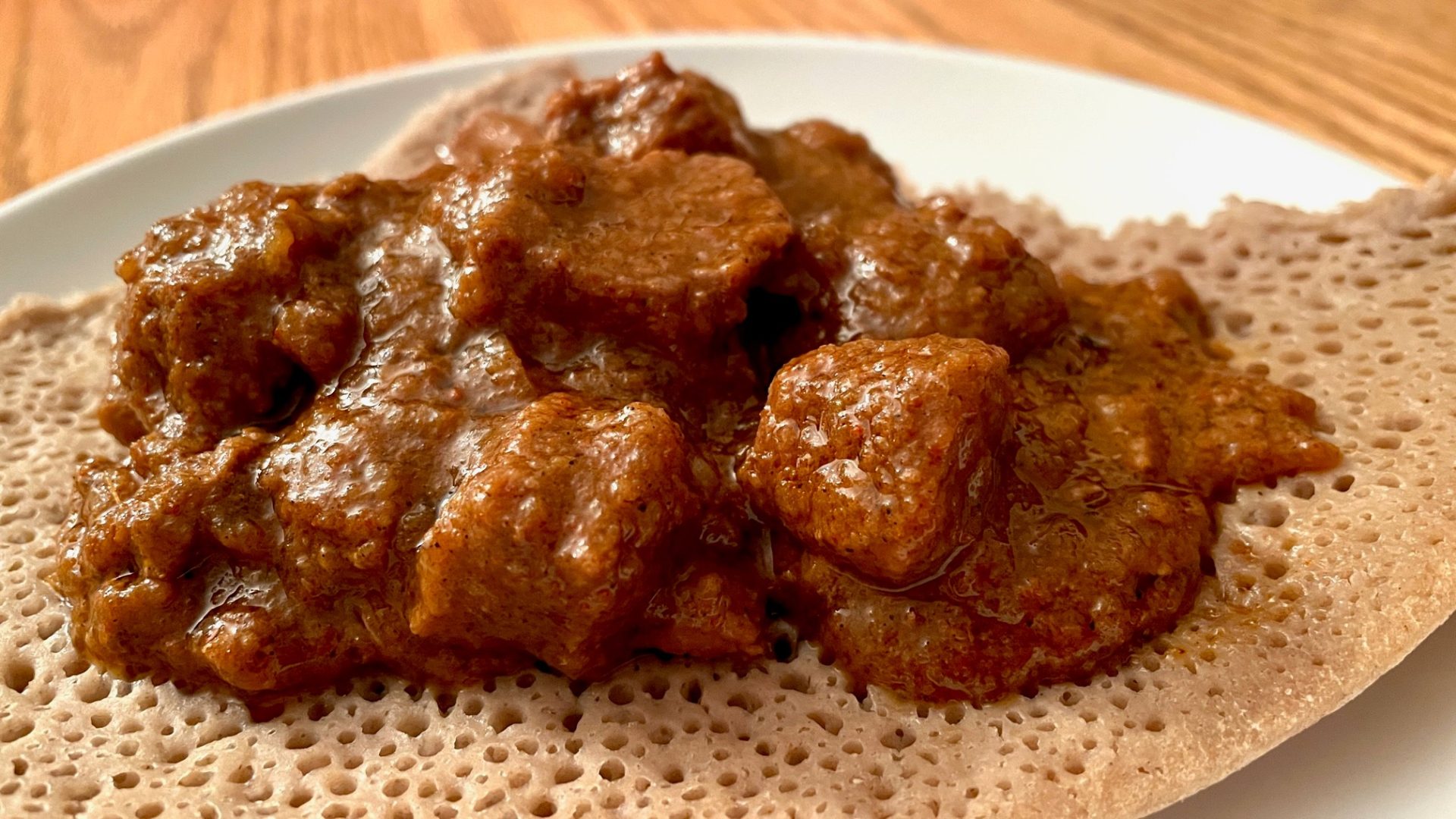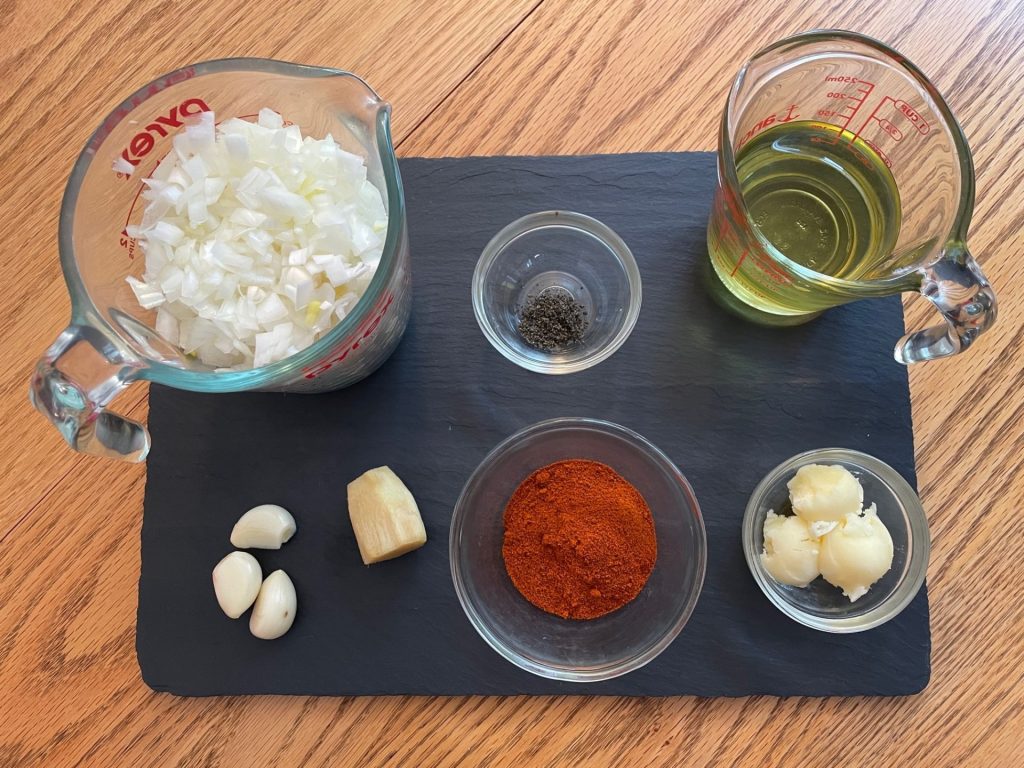
Minnesota is home to many people originally from Ethiopia and Eritrea, and their recipes add depth and richness to the flavor profile of the state. The key ingredient of this savory beef stew is berbere, a spice blend of chile peppers, coriander, basil, garlic, ginger and other spices. Adjust the heat level of the dish by adding more or less berbere, as the stew simmers, the spice mellows out and melds with the aromatics. Look for berbere at East African markets, at co-op grocery stores, or order it online. Every blend will be slightly different, so start with less and add more until you get to know your blend!
Key wot is usually eaten with injera, a spongy tangy flatbread made with teff and barley, that can be purchased at East African markets and some co-ops and grocery stores. If you can’t get your hands on injera, serve it with plain white rice or even soft white bread.
Don’t eat meat or trying out meatless Monday? Misr wat, made with red lentils, is a hearty vegetarian sister to this stew and is quick and easy to make once you have the ingredients on hand. Another related dish, doro wat, is made with chicken and hard-boiled eggs.
While this recipe is for the stove top, we imagine it would adapt well to use in an instant pot or crock pot too!
Ingredients:
- 2 cups chopped yellow onion
- 1 1/2 cups water, divided
- 3 cloves garlic
- 1 inch piece of ginger, peeled
- 1/3 cup corn oil or other neutral oil
- 1/4 to 1/2 cup berbere
- 1/4 teaspoon ground cardamom
- 1/4 teaspoon of ground rosemary
- Pinch ground nigella (optional)
- Pinch ground fenugreek (optional)
- 1 pound stew beef cut into 1 inch cubes
- 3 tablespoons ghee or butter
- 2 teaspoons salt

Directions:
1. In a medium saucepot, cover the onions with 1 cup of water, they should be almost covered. Simmer on medium heat until the water is almost gone and onions are becoming soft.
2. While onions are cooking, take the garlic and ginger and remaining 1/2 cup of water and put it in a blender or bullet blender. Blend on high until you have a smooth, thin slurry. Set aside.
3. Pour the oil over over the onions and add the berbere, cardamom and rosemary, and the nigella and fenugreek if using. Stir to mix and cook for 3-4 minutes to meld the spices. Don’t be surprised an how much oil there is, this makes the dish delicious!
4. Add the beef cubes and stir to mix well, then add the garlic-ginger slurry, ghee or butter, and salt.
5. Simmer the stew for 45 minutes to 1 hour until the onions have disappeared and the beef is tender – the longer it cooks the better! Add additional water as needed, it should be the consistency of a chunky tomato sauce. Taste and adjust seasonings, adding berbere or salt as desired.
Find local beef in the Minnesota Grown Directory! This recipe would probably be amazing with bison, goat or lamb. If you try it let us know!
